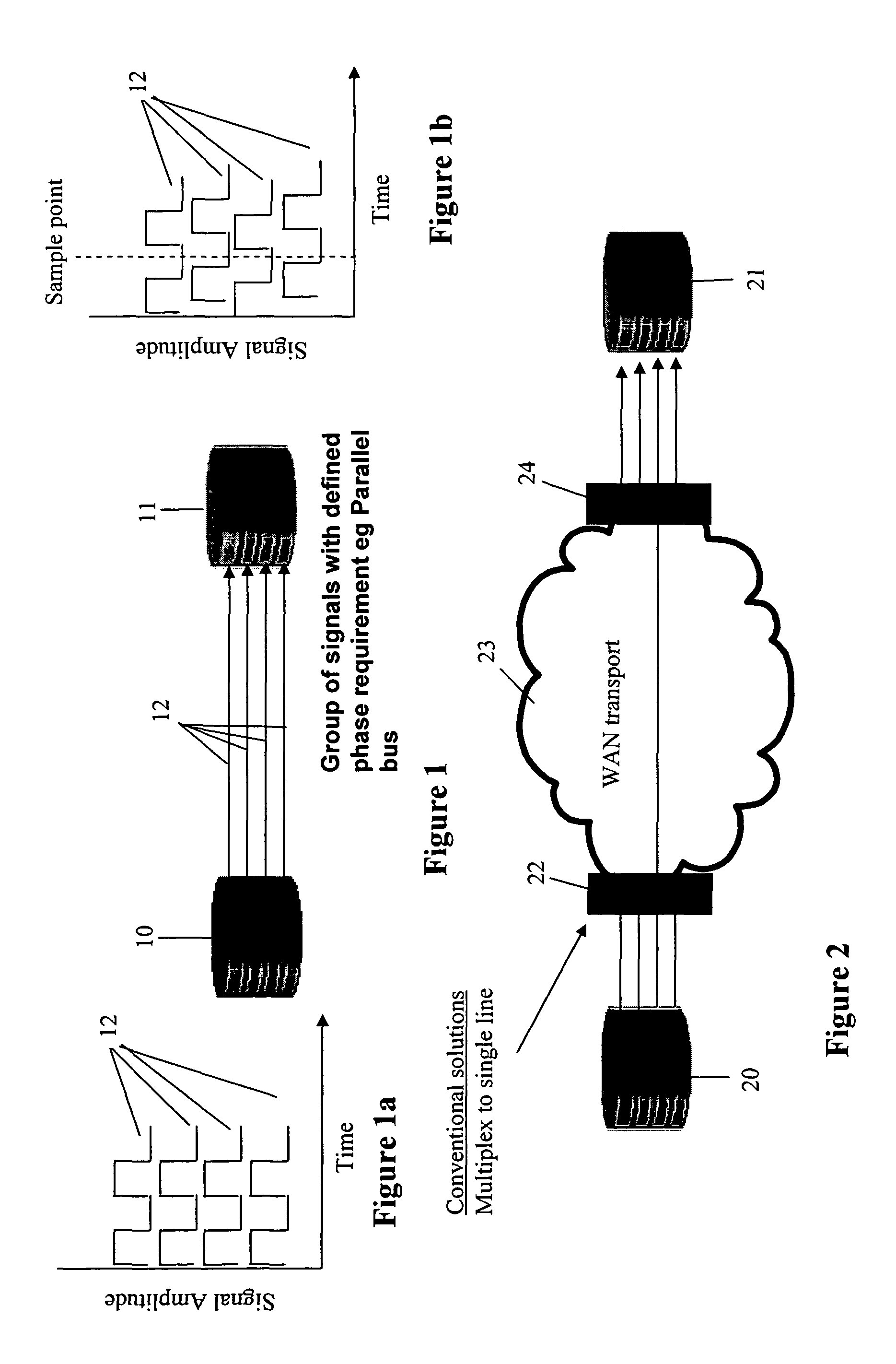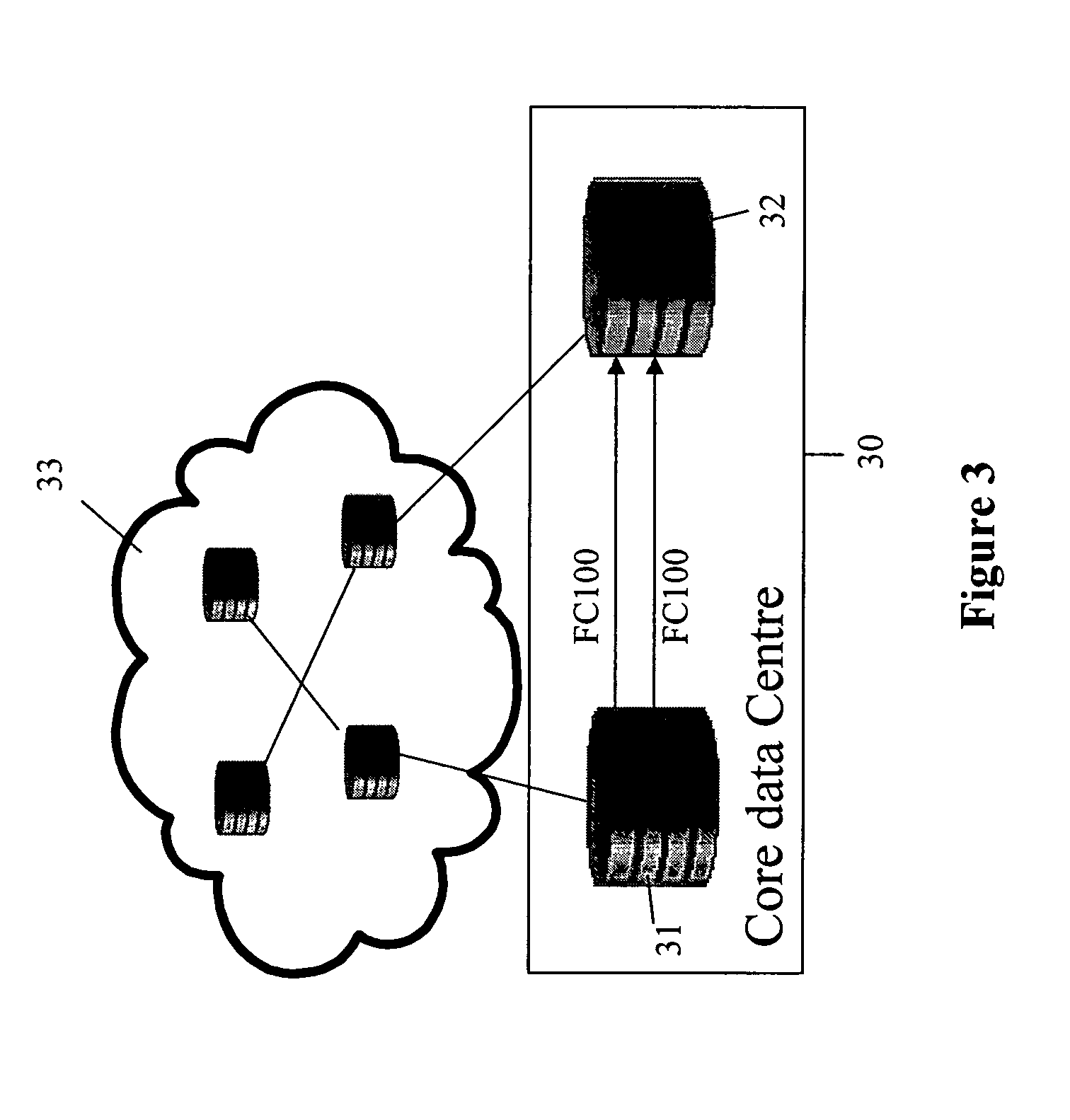Virtual concatenation for parallel data streams
a parallel data stream and virtual concatenation technology, applied in the field of synchronous transmission networks, can solve the problems of inability to recover the transmitted signal, link failure, and forced to operate at a lower bandwidth, and achieve the effect of simple and effectiv
- Summary
- Abstract
- Description
- Claims
- Application Information
AI Technical Summary
Benefits of technology
Problems solved by technology
Method used
Image
Examples
Embodiment Construction
[0042]Embodiments of the present invention are described below by way of example only. These examples represent the best ways of putting the invention into practice that are currently known to the Applicant although they are not the only ways in which this could be achieved.
[0043]The term “Wide Area Network” (WAN) is used to refer to a communications network distributed over a geographical area spanning hundreds of kilometers or greater. However it is noted that the distinction between a local area network (LAN) and a WAN is becoming increasingly blurred with a LAN having a smaller geographical coverage than a WAN.
[0044]As mentioned above it is often required to send a plurality of streams of data in parallel between two network nodes in a synchronous transmission network and also to maintain a particular alignment between those streams of data. For example, FIG. 1 shows a source 10 and destination 11 within a parallel bus. A plurality of signal streams 12 are transmitted between th...
PUM
 Login to View More
Login to View More Abstract
Description
Claims
Application Information
 Login to View More
Login to View More - R&D
- Intellectual Property
- Life Sciences
- Materials
- Tech Scout
- Unparalleled Data Quality
- Higher Quality Content
- 60% Fewer Hallucinations
Browse by: Latest US Patents, China's latest patents, Technical Efficacy Thesaurus, Application Domain, Technology Topic, Popular Technical Reports.
© 2025 PatSnap. All rights reserved.Legal|Privacy policy|Modern Slavery Act Transparency Statement|Sitemap|About US| Contact US: help@patsnap.com



